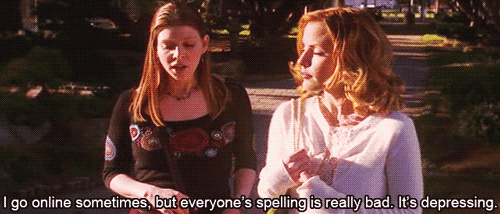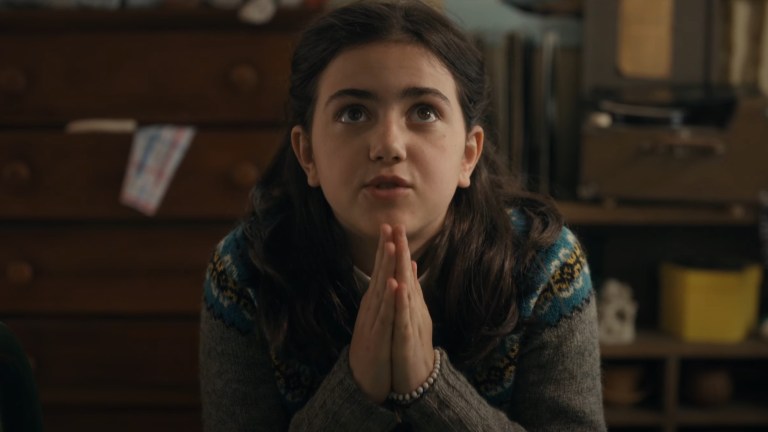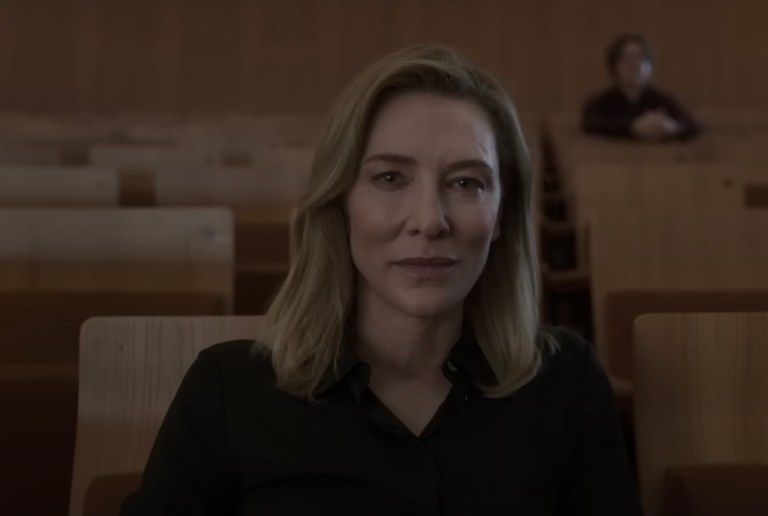How ‘Buffy’ Showed Me My Gender And Made Me Safe
BtVS, is still the most apt metaphor for being apart of the LGBT+ community that I’ve yet to see.
By ![]() Nick Moutvic
Nick Moutvic

I recently stumbled onto my old Livejournal account, and the final post I wrote began with, “Buffy is part of who I am. Deal with it.” Just to give you some insight into 13-year-old me.
I was 13 in the spring of 2003 when the final episode of Buffy the Vampire Slayer aired. On the precipice of teendome, puberty was nudging me closer and closer to the doors of a closet I hadn’t even realized I was living in. Thankfully, I had unknowingly spent the previous seven television seasons preparing for the big gay life I was about to lead.
For 7-years I had Buffy Summers (Sarah Michelle Gellar) staking vampires in graveyards, while donning impeccably tailored, red leather pants, and crop tops galore. I can easily recall the first moments of uninhibited exhilaration I experienced, when my mom sat me in front of the television (probably to get me out of her hair), for the the pilot episode of a new “monster show.” It was March 10, 1997; exactly 20 years ago, today. My fists clutched the fabric of the living room sofa, my heart racing as I watched her dust her and I’s first vamp. We were both so happy to see his crushed velvet blazer go with him. The next day I insisted my mother buy me a tasteful crucifix to wear at all times, and spent weeks attacking family members and guests with the remote control by slamming it into their sternum. To this day I live in fear of finding hidden cameras in my apartment and not being able to explain all the random karate kicks directed at no one.

Source: via Giphy
BtVS, is still the most apt metaphor for being apart of the LGBT+ community that I’ve yet to see. Buffy, like most superheroes, was told in no uncertain terms, that being the slayer meant her life was irrevocably different than that of everyone else’s. She was destined to lead a life of danger and secrecy, and even more danger if she failed at the secrecy part. But, it isn’t till Buffy begins challenging these notions that she is able to prosper. She surrounds herself with people who she can trust to know the truth about her. People who ultimately become the reason she is able to survive. Unlike those who’ve come before her, she isn’t just fighting to live, she is fighting for a life worth living.
In the season two finale, when Buffy finally comes out to her mother as The Slayer, the scene unfolds as every LGBT+ kids worse nightmare. Quips like, “You’re just going through a phase,” and “was it something I did?” are interjected by the elder Summers, not to leave out, “It’s because you didn’t have a strong father figure isn’t it?” The scene may read as comedic, but it plays out with the titular character being kicked out, and becoming a runaway. Subsequent moments found a traumatized 7-years-old me, being comforted by my mother with gentle rocking and soothing tones, both of us in complete and utter shock as to why I was cry-screaming while an action sequence played out on screen. Picture Jessie in that episode of Saved by the Bell, when she was addicted to caffeine pills for like a weekend, and sings the same two lines of I’m So Excited by the Pointer Sisters over and over again. It wasn’t till my mother told me that I was never allowed to watch that show again, was I able to snap out of my anxiety attack, to convince her I was fine, and that her option was too extreme of a solution to take.
It would be years till I could reconcile in myself that what shook me so fiercely that day was something I had always known, but wouldn’t allow myself to feel till then, that I was fundamentally different from everyone else I knew, even my parents, and that no matter how badly I wanted to be able relate to them, I never would.
Thankfully, Buffy rebounded and so did I. Buffy taught me that I couldn’t change my circumstance, and that accepting it was the only way to a sane existence. Each week made it vitally clear that I needed to find my own ‘Scooby Gang’. My own tribe, to call friends and confidants; and while I can’t say so with 100% certainty, the last 25-years have lead me to believe that friends are the only way anyone survives any of what life has to throw at us.

Source: via Tumblr
The metaphor comes full circle in the final moments of the series finale, when Buffy and her band of newly awakened slayers defeat the “big bad” of the season, and the obvious is stated: “You’re not the the only one anymore. How does it feel?” The only response needed of course is a simple smile of gratitude, because as any LGBT+ person can tell you, finding out you’re not alone in the fight is the most genuine form of happiness one can feel.
Unlike Dawson’s Creek, Felicity, and other teen dramas, Buffy was never a narrative about finding an identity; it was always about having a lot of them. For a small, golden group of chosen ones, high school is an experience that is looked back on fondly. Football games, and prom, first loves and first times. There’s a group in every school, it seems, who float through those four years without breaking a sweat and actually have fun in between studying and taking tests.
I was not one of those people.
The monsters in the first season are literal manifestations of the demons that plague teenagers—a mother so intent on living vicariously through her daughter that she switches bodies with her, an internet catfish who pretends to be a teenage boy, but whose real identity is much more complex (in this case, he’s a demon named Moloch who got accidentally uploaded onto the web, LOL). In one episode, a classmate is ignored to the extent that she becomes as invisible as she feels on the inside. In hyperbolizing common teenage issues into tangible villains, Buffy makes them important enough to agonize over; it makes them conquerable. Who didn’t worry that once they finally gave up their virginity to their high school boyfriend, he would turn into a completely different person? These moments reminds us that while Buffy is responsible again and again with saving the world, she is only 16-years-old and still faces her share of everyday anxieties.

Source: via Giphy
There are numerous times when BtVS will bring you to tears—when Buffy tells Giles (Anthony Stewart Head) she’s only 16 and isn’t ready to die; when Jonathan (Danny Strong) awards Buffy the Class Protector Award; when our female heroine sacrifices her own life for her sister’s. But nothing can prepare you for Joyce Summers’ (Kristine Sutherland) death.
Thankfully, Buffy had Giles to lean on. A mix of Dumbledore, Gandalf, and the father Buffy never really had, he guides his Slayer to victory over demons, of both the monster and human variety; aided by the witchy Willow (Alyson Hannigan) and the blundering, yet loyal Xander (Nicholas Brendon). Even though the Scooby Gang goes through many incarnations over the years—rotating members include the narcissistic Cordelia (Charisma Carpenter), Oz the werewolf (Seth Green), former demon Anyanka, aka Anya (Emma Caufield), and the gone-too-soon Tara (Amber Benson)—their relationships are the core of the show. And if you eliminate the constant supernatural threats, Buffy would stand on its own as a great series about friends—although we already had one of those.
Thank you, Buffy the Vampire Slayer, and thank you, Joss Whedon. Thank you for promising a closeted teen that he would be okay. Thank you for showing him he wouldn’t only survive, but thrive. ![]()




